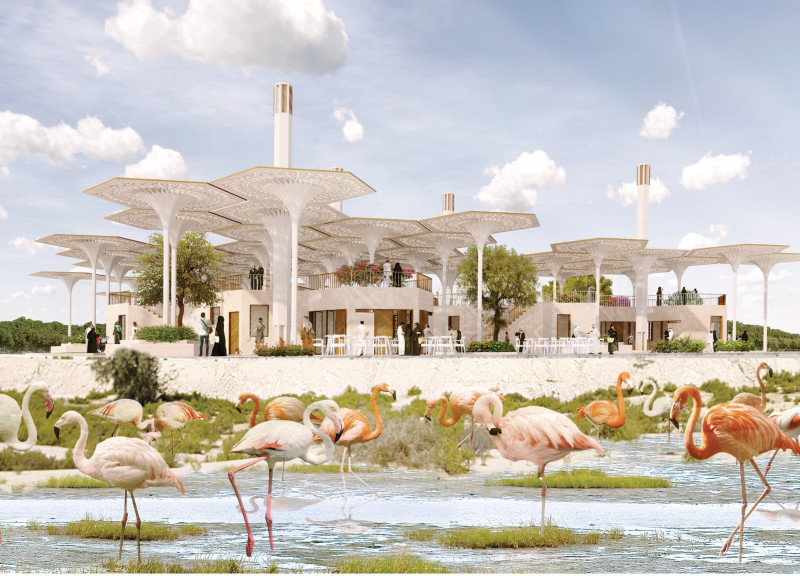5 key facts about this project
Located in the Al Wathba Wetland Reserve, the design emphasizes a connection between humans and nature. By creating spaces that serve both people and wildlife, it highlights ecological sustainability and cultural relevance. The concept focuses on integrating traditional practices with modern design elements, creating an environment that encourages interaction with the rich biodiversity of the wetlands.
Canopies drawing inspiration from the elegance of greater flamingos provide vital shelter and shade across the site. Their lattice structure allows sunlight to filter through, creating patterns of light and shadow. This interplay enriches the experience for visitors, who can enjoy the changing environment throughout the day. The canopies blur the lines between indoor and outdoor spaces, encouraging a close relationship with nature.
Windcatchers are incorporated into the design to address the region's high temperatures. Positioned strategically, they facilitate natural airflow and help regulate indoor climates. These structures allow cool air to enter while enabling warm air to escape, ensuring comfort for those using the space. Reflective pools complement this by contributing to a cooler atmosphere, making the site a pleasant area for visitors.
The layout follows Arabic geometric patterns, utilizing hexagonal shapes to create a network of paths and nodes. This arrangement promotes easy movement throughout the site and evokes traditional village environments, making it feel welcoming. With multiple access points, guests are encouraged to explore various areas. The winding pathways invite wandering and engagement with the lush gardens.
Rainwater harvesting systems play a crucial role in the sustainable design. They capture rainwater for irrigation, demonstrating the commitment to environmental care. This approach ensures that the local plant life thrives while reducing water waste. By integrating these systems into the overall design, the architecture supports ecological balance and function.
Among the vibrant greenery, seating areas are placed thoughtfully to provide spots for rest and reflection. These spaces invite visitors to pause and absorb their surroundings. They serve as quiet retreats where one can connect with the environment and appreciate the diverse landscape within the wetland.






















































